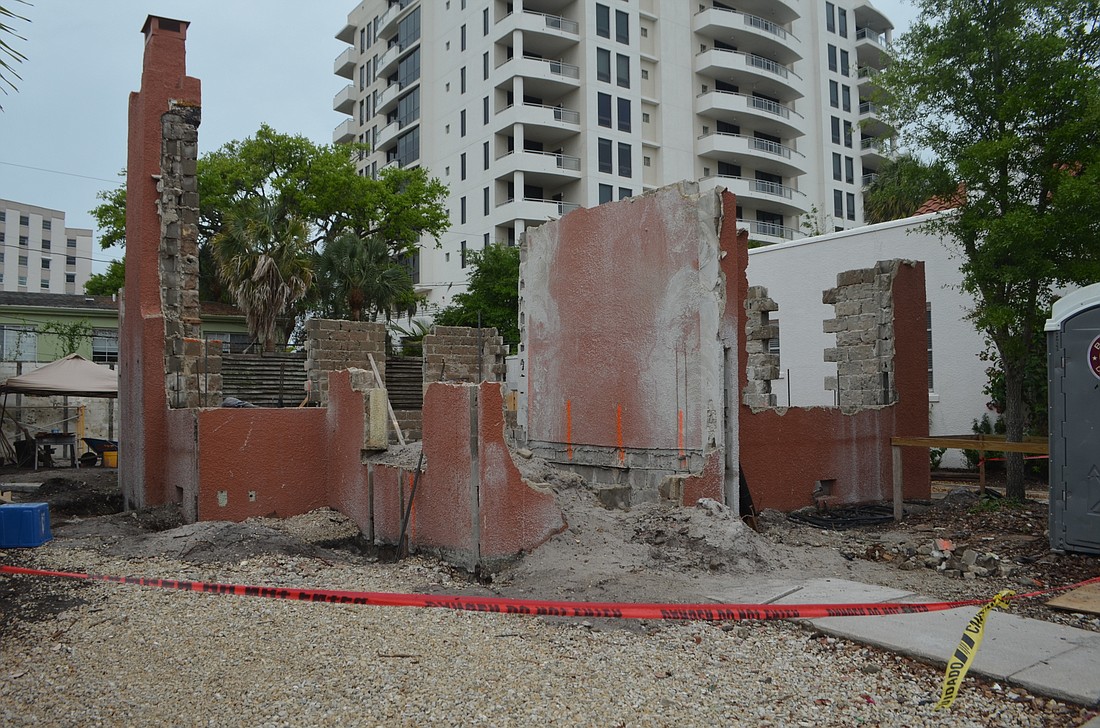- April 25, 2024
-
-
Loading

Loading

When Janet Minker saw the state of the building at 442 Burns Court, she was taken aback.
In March, Palm Avenue resident Holly Hinman noticed significant work being done to the 1926 structure. Initially, she assumed the renovations would preserve the building’s appearance.
By the time the roof was gone and large fragments of the exterior had been removed, leaving sections of exposed brick inside the bungalow visible from the street, Hinman became concerned about the ultimate fate of the building.
Hinman reached out to city staff with questions about the project. She also contacted Minker, who formerly served as chairwoman of the Sarasota Architectural Foundation. Minker was troubled by what she saw; it appeared to be tantamount to demolition of a building representative of 1920s Sarasota.
The fact that this was occurring in Burns Court, a nationally designated historic district, made it all the more concerning.
“It’s charming,” Minker said. “It has history; it has flavor, and to see something so drastically done is quite unsettling.”
Minker posted the photo on Facebook, which drew outcry from commenters. How could the city let something like this happen? Did officials not care about preserving Sarasota’s past?
According to city Senior Planner Cliff Smith, the explanation can be found in the city’s regulations and the different types of designations for historic structures. Smith also bemoaned the fate of the Burns Court building, but he said he never had an opportunity to review the planned renovations, because the city’s development procedures didn’t require it.
Smith, the city’s point person on historic preservation, is responsible for reviewing renovations for all structures that are locally designated as historic. That’s a voluntary designation, one the owner must actively seek out and which comes with enhanced review standards if a building qualifies.
The Burns Court building is not locally designated as a historic structure. Instead, it is classified as a contributing structure to a national historic district — a distinction that can be bestowed on a property even without an owner’s approval. The city’s zoning code does not include a more rigorous review process for that type of structure. In fact, Smith said, plans for those properties don’t even go in front of him before the city approves them.
Smith said there’s a reason for that distinction: The National Register of Historic Places states a building’s placement on the register should not create any additional obligation for a property owner.
“Owners can do anything they wish with their property provided that no federal license, permit or funding is involved,” the national register’s website said.
Despite any criticism of the city’s preservation policies, Smith said officials are taking steps to encourage the maintenance of historic buildings. Smith is currently pursuing a series of zoning text amendments focused on historic preservation, including one that would give his office the opportunity to administratively review changes to buildings in historic districts, such as the Burns Court structure.
“If this passes, then for the first time, we would actually have review power to at least look at these things,” Smith said.